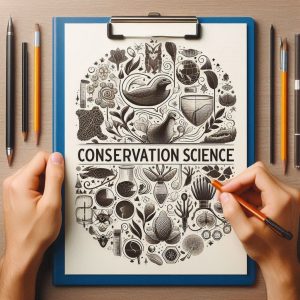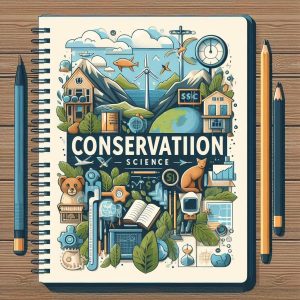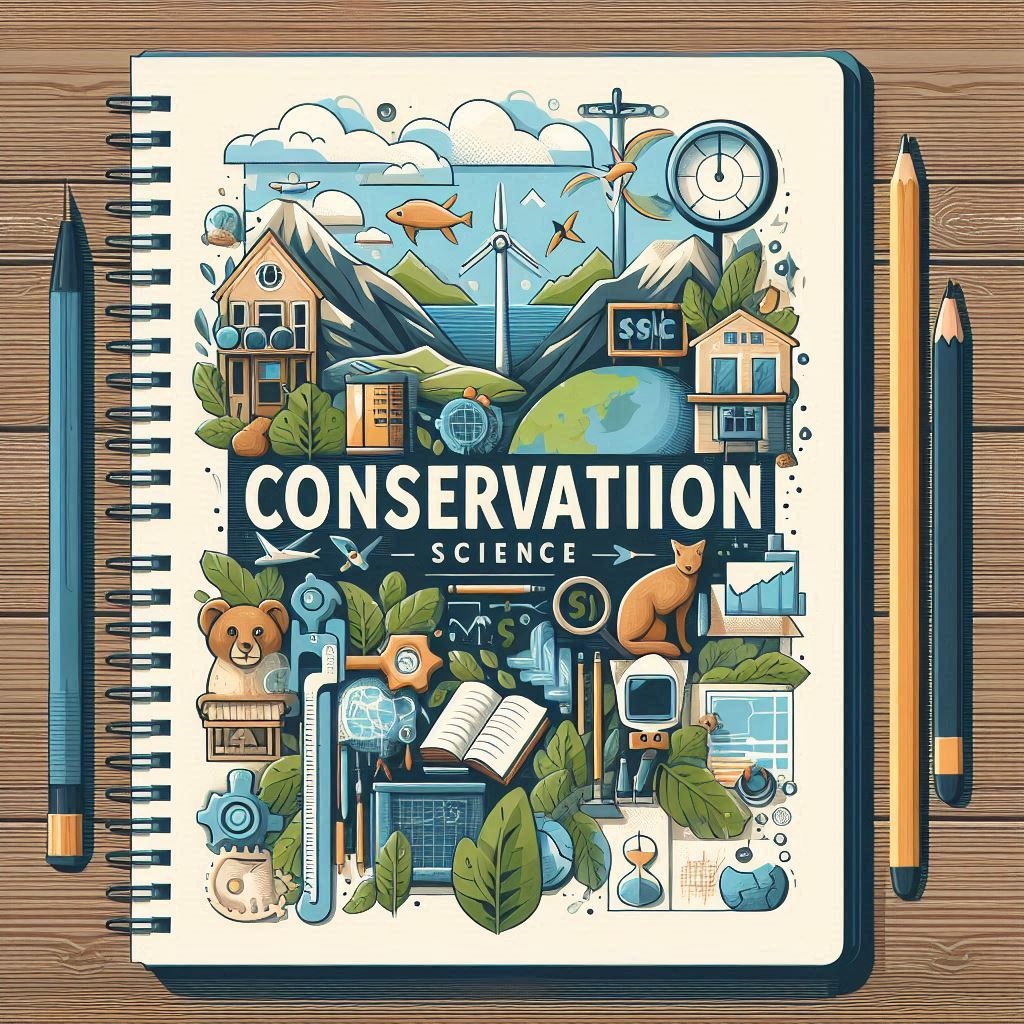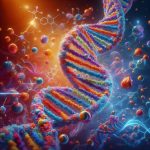Introduction to Conservation Science
Conservation science is a multidisciplinary field dedicated to understanding and preserving Earth’s biodiversity and ecosystems. It integrates knowledge from biology, ecology, genetics, economics, and social sciences to develop effective strategies for the sustainable management of natural resources. Conservation science aims to protect species from extinction, maintain ecosystem health, and promote the sustainable use of natural resources for future generations. Explore more about Conservation Science at Conservation Science.
Key Areas of Conservation Science
Conservation science encompasses various key areas, including habitat restoration, species reintroduction, wildlife management, and sustainable resource use. These efforts aim to mitigate human impacts on natural ecosystems and promote biodiversity conservation globally. Learn more about these areas at IUCN – International Union for Conservation of Nature.
Interdisciplinary Approach in Conservation Science
An interdisciplinary approach in Conservation Science is essential for addressing complex environmental challenges that transcend traditional scientific boundaries. This approach integrates knowledge and methodologies from various disciplines, including ecology, sociology, economics, political science, and technology, to develop holistic and effective conservation strategies. Key elements of an interdisciplinary approach in conservation science include:
- Ecological and Environmental Sciences: These provide the foundational understanding of biodiversity, ecosystems, and the processes that sustain life. Insights from these fields are crucial for identifying conservation priorities and developing science-based management practices.
- Social Sciences: Incorporating perspectives from sociology, anthropology, and psychology helps understand human behavior, cultural values, and social dynamics that influence conservation outcomes. Engaging with local communities and stakeholders is critical for ensuring the social acceptance and sustainability of conservation initiatives.
- Economics: Economic analysis is vital for evaluating the costs and benefits of conservation actions, understanding market dynamics, and developing financial mechanisms to support conservation. Environmental economics can guide policies that incentivize sustainable resource use and ecosystem protection.
- Political Science and Governance: Understanding political systems, governance structures, and policy-making processes is essential for advocating for effective conservation policies and ensuring their implementation. Political science also helps navigate power dynamics and build coalitions for conservation advocacy.
- Technology and Innovation: Advances in technology, such as GIS, remote sensing, and data analytics, enhance the ability to monitor ecosystems, assess conservation interventions, and make data-driven decisions. Innovation in technology also opens new avenues for engaging the public and raising awareness about conservation issues.
Collaborative Research and Projects
Collaborative research and interdisciplinary projects are at the heart of an integrated approach in Conservation Science. Initiatives like the Long-Term Ecological Research (LTER) Network and the Intergovernmental Science-
Importance of Conservation Science
Conservation science is crucial for:
- Maintaining ecosystem services essential for human well-being, such as clean air and water.
- Preserving genetic diversity within species to enhance their resilience to environmental changes.
- Supporting sustainable development that balances economic growth with environmental conservation.
- Promoting ethical stewardship of natural resources and fostering environmental awareness.
Challenges and Opportunities
While conservation science faces challenges such as habitat loss, climate change, and biodiversity decline, it also presents opportunities for innovation and collaboration. Advances in technology, policy development, and public engagement can enhance conservation efforts and pave the way for a sustainable future.
Role of Genetics in Conservation Science
Genetics plays a crucial role in Conservation Science, offering valuable insights into the diversity, structure, and dynamics of populations. Understanding the genetic makeup of species helps conservationists develop strategies to preserve genetic diversity, manage populations, and mitigate the effects of environmental changes. Key aspects of the role of genetics in conservation science include:
- Genetic Diversity: Preserving genetic diversity within species is vital for their adaptability and resilience to changing environments. Genetic studies help identify populations with low genetic diversity, which are at higher risk of inbreeding and genetic drift, guiding conservation efforts to enhance their genetic health.
- Population Structure and Connectivity: Genetic analysis reveals the structure and connectivity of populations, informing strategies to maintain or restore gene flow between fragmented habitats. This is essential for maintaining viable populations and preventing genetic isolation.
- Identification of Distinct Populations: Genetic tools help identify distinct populations, subspecies, or cryptic species that may require separate conservation management. This ensures that unique genetic lineages are preserved and not overlooked in conservation planning.
- Forensic Applications: Genetics plays a role in wildlife forensics, aiding in the identification of illegally traded species and their geographic origins. This helps enforce wildlife protection laws and combat poaching and illegal trade.
- Genomic Studies and Adaptive Potential: Advances in genomic technologies enable the study of adaptive genetic variation and the identification of genes associated with traits important for survival. This knowledge can inform conservation strategies that enhance the adaptive potential of species to environmental changes.
Applications of Genetics in Conservation Projects
There are numerous applications of genetics in conservation projects:
- Reintroduction Programs: Genetic analysis is used to select individuals for reintroduction programs to ensure that released populations have sufficient genetic diversity and are well-suited to their environment. For example, the reintroduction of the black-footed ferret in North America has been guided by genetic considerations.
- Ex Situ Conservation: Genetic information guides the management of captive breeding programs to maximize genetic diversity and minimize inbreeding. Zoos and botanical gardens use genetic data to manage breeding and seed banks effectively.
- Conservation of Endangered Species: Genetics helps identify and prioritize conservation actions for endangered species, such as the California condor and the Amur leopard. Genetic studies inform breeding programs, habitat management, and population monitoring.
| Application | Example Species | Conservation Strategy |
|---|---|---|
| Reintroduction Programs | Black-footed Ferret | Ensuring genetic diversity in released populations |
| Ex Situ Conservation | Various Zoo and Botanical Garden Species | Managing captive breeding and seed banks |
| Conservation of Endangered Species | California Condor, Amur Leopard | Guiding breeding programs and habitat management |
Read more about genetic applications in conservation at Nature’s article on genetics and conservation.
Future Directions and Challenges
The future of genetics in Conservation Science includes several promising directions and challenges:
- Integrating genomic data with ecological and environmental data to develop comprehensive conservation strategies that account for genetic, ecological, and environmental factors.
- Developing new genetic tools and technologies to monitor genetic diversity and population dynamics in real-time, facilitating adaptive management.
- Addressing ethical and practical considerations in the application of genetic technologies, such as gene editing, for conservation purposes.
- Ensuring equitable access to genetic resources and technologies for conservation efforts in developing countries.
Challenges and Solutions in Conservation
Conservation science faces numerous challenges, including habitat fragmentation, climate change, invasive species, and human-wildlife conflicts. Innovative solutions such as protected areas, community-based conservation initiatives, and policy interventions are critical in addressing these challenges. Explore solutions at WWF – World Wildlife Fund.
Conservation Ethics and Education in Conservation Science
Ethical considerations and public education are integral to conservation science, promoting awareness, sustainable practices, and responsible decision-making. Engaging stakeholders and fostering environmental stewardship are essential for achieving conservation goals globally. Learn more about conservation ethics and education at CBD – Convention on Biological Diversity.
Future Directions in Conservation Science
The future of Conservation Science is promising, with several key areas poised for significant development:
- Climate-Resilient Conservation Strategies: Developing and implementing strategies that enhance the resilience of ecosystems and species to climate change.
- Technological Innovations: Leveraging emerging technologies such as remote sensing, artificial intelligence, and genetic tools to improve biodiversity monitoring and management.
- International Cooperation: Strengthening global frameworks and policies to facilitate coordinated conservation efforts across borders.
- Community and Indigenous Engagement: Empowering local communities and indigenous peoples to actively participate in and lead conservation initiatives.
- Conservation Finance: Exploring innovative financial mechanisms to support long-term conservation projects and sustainable resource management.
Impact of Emerging Technologies
Emerging technologies are revolutionizing Conservation Science. Tools like satellite imagery, drones, and AI-driven analytics provide unprecedented insights into ecosystem health and biodiversity trends. These technologies enable more accurate monitoring, quicker response to environmental threats, and the development of data-driven conservation strategies.
Integrating Conservation and Development
The integration of conservation and sustainable development is a critical future direction in Conservation Science. Ensuring that conservation efforts support local livelihoods and economic growth can create a win-win scenario where both nature and human communities thrive. This approach emphasizes the importance of ecosystem services and the sustainable use of natural resources.
Policy and Governance in Conservation Science
Effective policy and governance are critical components of Conservation Science. These elements ensure that conservation efforts are systematically organized, legally supported, and adequately funded. Key aspects of policy and governance in conservation science include:
- Legal Frameworks: Developing and enforcing robust environmental laws and regulations to protect biodiversity and natural habitats. This includes establishing protected areas, regulating resource extraction, and ensuring compliance with international agreements like the Convention on Biological Diversity.
- Institutional Capacity: Strengthening the capacity of governmental and non-governmental organizations to implement and manage conservation initiatives effectively. This involves training personnel, improving infrastructure, and securing financial resources.
- Stakeholder Engagement: Involving a wide range of stakeholders, including local communities, indigenous peoples, private sector entities, and international organizations, in the decision-making process. Collaborative governance models promote transparency, accountability, and shared responsibility for conservation outcomes.
- Adaptive Management: Implementing adaptive management practices that allow for continuous learning and flexibility in response to new scientific information and changing environmental conditions. This approach ensures that conservation policies remain relevant and effective over time.
- Integrated Approaches: Promoting integrated approaches that consider ecological, social, and economic factors in conservation planning. This includes landscape-scale conservation, ecosystem-based management, and the integration of conservation objectives into broader development policies.

International Cooperation in Conservation Science
International cooperation in Conservation Science is crucial for addressing global environmental challenges that transcend national borders. Collaborative efforts among countries and international organizations enhance the effectiveness of conservation strategies and facilitate the exchange of knowledge, resources, and technologies. Key aspects of international cooperation in conservation science include:
- Global Conservation Initiatives: International frameworks such as the Convention on Biological Diversity (CBD) and the Ramsar Convention on Wetlands provide platforms for countries to commit to biodiversity conservation and sustainable use of natural resources. These agreements set global targets and facilitate coordinated action.
- Transboundary Conservation Areas: Collaborative management of transboundary protected areas, such as the Kavango-Zambezi Transfrontier Conservation Area in southern Africa, helps preserve ecosystems that span multiple countries. These initiatives promote ecological connectivity and coordinated conservation efforts across borders.
- International Funding and Support: Organizations like the Global Environment Facility (GEF) and the World Bank provide financial resources and technical support for conservation projects worldwide. These funds help implement conservation actions, build local capacities, and foster sustainable development.
- Research Collaboration and Data Sharing: International research collaborations and data-sharing platforms, such as the Global Biodiversity Information Facility (GBIF), enable scientists to access and share biodiversity data globally. This enhances the understanding of biodiversity patterns, threats, and conservation priorities.
- Capacity Building and Education: International training programs and capacity-building initiatives, such as those offered by the International Union for Conservation of Nature (IUCN), equip conservation practitioners with the skills and knowledge needed to address global conservation challenges effectively.
Examples of Successful International Cooperation
Several examples highlight the success of international cooperation in conservation science:
- The Amazon Cooperation Treaty Organization (ACTO): ACTO promotes sustainable development and conservation of the Amazon Basin through cooperation among its member countries. This initiative addresses deforestation, biodiversity loss, and climate change impacts in the region.
- The Coral Triangle Initiative (CTI): The CTI is a multilateral partnership of six countries in the Asia-Pacific region aiming to safeguard marine and coastal resources. It focuses on sustainable fisheries, marine protected areas, and climate change adaptation.
- The Great Green Wall Initiative: This African-led project involves over 20 countries working together to combat desertification and restore degraded landscapes across the Sahel region. It aims to create a mosaic of green and productive landscapes.
Future Directions and Challenges
Looking ahead, international cooperation in Conservation Science faces several future directions and challenges:
- Strengthening international legal frameworks to ensure robust commitments and compliance from participating countries.
- Enhancing the integration of conservation goals into global development agendas, such as the United Nations Sustainable Development Goals (SDGs).
- Addressing geopolitical tensions and conflicts that hinder collaborative conservation efforts in politically sensitive regions.
- Increasing the resilience of international conservation efforts to global challenges such as climate change, pandemics, and economic crises.
Community-Based Conservation
Community-based conservation approaches empower local communities to take an active role in managing and protecting their natural resources. These initiatives recognize the traditional knowledge and practices of indigenous peoples and aim to balance conservation goals with the socioeconomic needs of local populations. Successful examples include community-managed forests, marine protected areas, and sustainable agriculture projects.
Funding and Financial Mechanisms
Securing adequate funding is essential for the long-term success of conservation efforts. Innovative financial mechanisms, such as conservation trust funds, payment for ecosystem services (PES), and green bonds, provide sustainable financing for conservation projects. Additionally, public-private partnerships and corporate social responsibility (CSR) initiatives can mobilize resources and expertise from the private sector.
Monitoring and Evaluation
Robust monitoring and evaluation systems are necessary to assess the effectiveness of conservation policies and programs. These systems track progress towards conservation goals, identify areas for improvement, and ensure accountability. Advances in technology, such as remote sensing and GIS, enhance the ability to monitor large-scale environmental changes and inform adaptive management strategies.
FAQs on Conservation Science

What is Conservation Science?
Conservation Science is the study and practice of preserving biodiversity, protecting natural habitats, and managing ecosystems to sustain the diversity of life on Earth.
Why is Conservation Science important?
Conservation Science is crucial for maintaining ecosystem balance, protecting endangered species, and ensuring sustainable use of natural resources. It helps mitigate the impacts of climate change and human activities on the environment.
What are the main methods used in Conservation Science?
Common methods include habitat restoration, wildlife monitoring, species reintroduction, legal protection of areas, and public education. Conservationists also use advanced technologies like satellite imagery and genetic analysis.
How can individuals contribute to conservation efforts?
Individuals can contribute by supporting conservation organizations, reducing their ecological footprint, participating in local conservation projects, and advocating for environmental policies.
Disclaimer
The information provided in this article is for educational purposes only. While every effort has been made to ensure the accuracy and reliability of the information, the authors and publishers assume no responsibility for any errors or omissions. Conservation Science is a complex and evolving field, and the views expressed in this article do not necessarily reflect the official position of any organization or institution.
Caution
Engaging in conservation activities should be done with care and consideration for local laws, regulations, and cultural sensitivities. Always consult with local authorities and experts before undertaking conservation projects. Improper actions can sometimes do more harm than good to the environment and wildlife. Additionally, while technology and scientific methods are powerful tools in conservation, they should be used responsibly and ethically.



